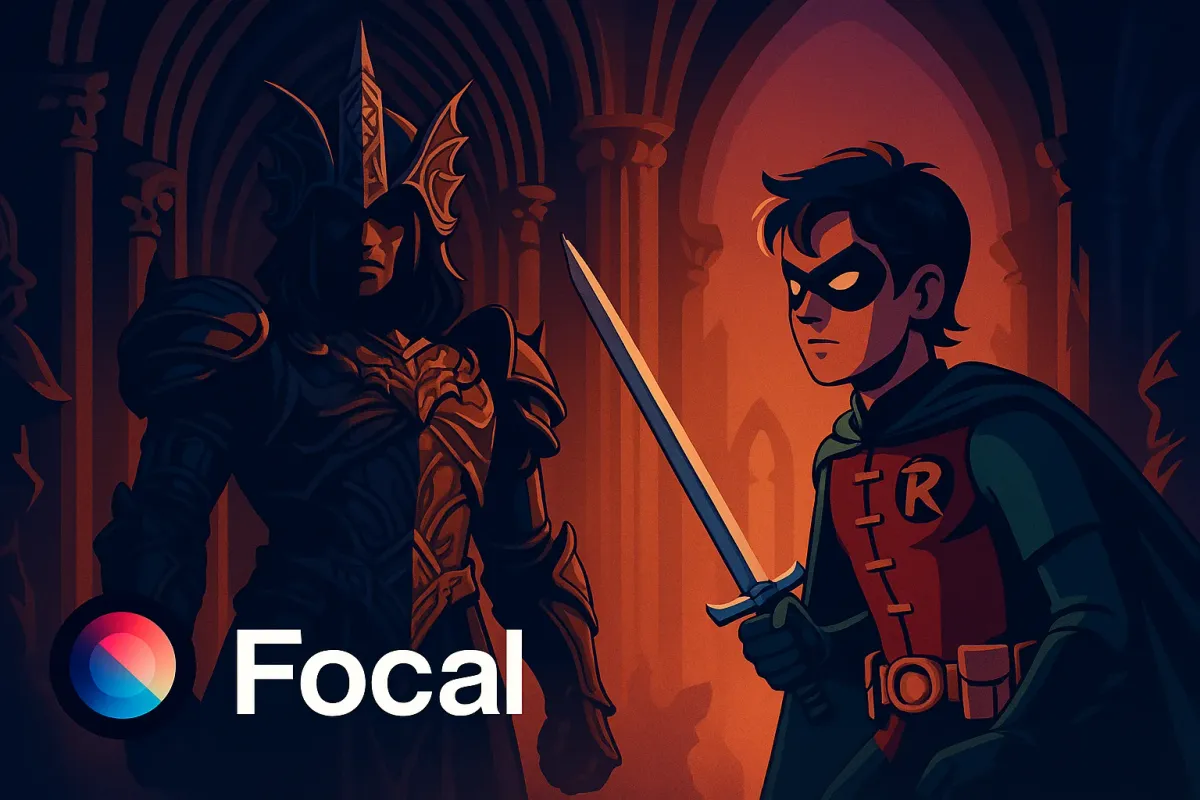How to Make Dark Fantasy AI Videos with Visual Prompts

Why Dark Fantasy is a Perfect Genre for AI Video Generation
Dark fantasy blends the surreal, grotesque, and mythic into one cinematic aesthetic. AI models are naturally drawn to this genre because:
- Texture-heavy prompts (fog, blood, rust, ancient runes) are well-understood by diffusion models.
- The genre allows for loose narrative structure, ideal for assembling AI-generated stills into fluid scenes.
- Models trained on vast fantasy and horror datasets output visually rich, painterly, and moody imagery.
This genre isn’t just a style—it’s a system of world-building that AI interprets extremely well.
What a Strong Visual Prompt Looks Like in This Genre
Forget basic inputs like “dark forest” or “fantasy warrior.” The real magic is in stacking detailed tokens and camera language into your prompts.
Prompt Building Blocks Table:
| Element Type | Examples You Can Use |
|---|---|
| Environment | “decayed temple ruins”, “foggy swamp under a red moon”, “ashen wasteland” |
| Creature Design | “armored lich with molten eyes”, “skeletal wyvern, semi-transparent wings” |
| Costuming | “bloodstained leather armor”, “cursed crown forged from obsidian” |
| Mood & Tone | “cinematic lighting, low contrast”, “hyper-real fog diffusion”, “tenebrous palette” |
| Camera Styling | “wide shot”, “telephoto lens”, “35mm film grain”, “dutch angle” |
👉 TIP: Use natural language like “a cursed knight walking through a dead forest at twilight, with glowing sigils etched into his armor – cinematic shot, volumetric lighting, concept art style.”
Using Prompt Sequences to Generate Scene Progression
One-off images are fine—but dark fantasy thrives in motion. By stacking prompt variations, you can imply a narrative or emotional arc.
Example Prompt Progression:
- “a dark cathedral interior, flickering torchlight, ancient murals depicting war gods”
- “hooded figure enters from shadow, face hidden, carrying a rusted sword”
- “close-up of eyes glowing beneath the hood, red embers swirl in the air”
- “hall begins to crumble, spectral forces swirl around figure, stained glass shatters”
These visual transitions are perfect for stitching into AI video timelines with crossfades, parallax, or animated overlays.
Essential Features to Target in Generated Outputs
Whether you're generating stills for animation or directly creating video clips, these are non-negotiable aesthetic checkboxes in dark fantasy output:
- Texture and grain (stone, bone, fabric, blood)
- Color grading (muted greens, dark reds, tarnished gold, charcoal blacks)
- Backlighting and silhouette drama
- Compositional emptiness (a single figure in a vast, ominous space)
- Architectural decay (cracked statues, ruins, overgrowth)
A well-crafted visual prompt makes the AI behave like a seasoned concept artist: pulling from horror tropes, mythic structure, and surreal environments.
Types of Dark Fantasy AI Video Concepts You Can Create
| Format Style | Description | Best Use Case |
|---|---|---|
| Cinematic Trailer | Short sequences, epic narration overlays, intense cuts | Series teasers, indie film concepts |
| Visual Poem | Slow transitions, music-driven imagery, minimal action | Music videos, mood reels |
| Creature Showcase | Rotating models, close-ups, anatomical details | Game dev visualizations, lore building |
| Epic Lore Scroll | Static camera pans over rich environments + text overlays | Worldbuilding assets |
| Dream Sequence Montage | Ethereal, nonlinear edits, high contrast between scenes | Surreal storytelling, horror shorts |
Each concept type benefits from unique prompting approaches—test different visual cues like fog density, arcane symbols, or cursed weather effects.
How to Animate Still Images into Fluid Dark Fantasy Scenes
You don’t need native video from the model. These methods make static outputs move:
- 2.5D parallax: Separate background, midground, and foreground manually or via AI upscaling.
- Frame interpolation: Generate in-between frames with AI (like RIFE, DAIN) to create motion.
- Overlay FX: Add smoke, sparks, embers, lens flares, or rain using After Effects or DaVinci Fusion.
- Zoom, Pan, Shake: Use slow Ken Burns style movements to emphasize cinematic mood.
Combining 6–10 images with smart transitions can create a full 20–30 second sequence with weight and pacing.
Lighting Prompts That Drastically Change the Vibe
Lighting is your invisible storyteller. The same prompt with different lighting feels entirely new.
| Lighting Prompt | Mood Achieved |
|---|---|
| “underlit from below” | Unease, evil lurking |
| “blue ambient mist” | Cold, tragic, lonely |
| “sunset bleeding through trees” | Melancholic, mythic |
| “torchlight flickering” | Mystery, ritual, tension |
| “no light source, eyes glow only” | Supernatural, dread |
Mix and match lighting with weather or texture prompts to find rare aesthetic combinations.
Captioning and Voice for AI-Generated Fantasy Video
If you're adding narration, go for archaic, poetic structure rather than literal storytelling. This style fits the genre and reinforces the AI’s surrealism.
Sample Caption Style:
“In the hollow between worlds, the crowned silence waits.”
“Ash fell like rain. And still, they marched.”
Use whispers, layered voices, or distorted pitch in audio for extra immersion. Sound design turns static images into a breathing universe.
Avoid These Common Dark Fantasy Generation Mistakes
Even well-written prompts fall flat if you don’t watch out for:
- Overusing clichés: “skull throne” and “dark lord” have become AI visual tropes—add specific context or unexpected contrast.
- Ignoring contrast: Too much darkness without light ruins readability. Balance glowing elements with deep shadows.
- Repeating motifs: Don’t use “foggy forest” ten times. Shift between biomes: volcanic temples, frozen cathedrals, underwater ruins.
- Uniform face syndrome: Vary characters by ethnicity, deformity, ornamentation, or silhouette.
Lazy input = generic output. Push the language. Give the AI something to chew on.
Final Quick Checklist: From Prompt to Dark Fantasy Video
- Wrote rich, cinematic prompts with mood, lighting, and action.
- Built a 4–6 prompt narrative sequence.
- Generated stills at high resolution (preferably 1024px+).
- Animated scenes with camera movement or FX overlays.
- Added poetic narration or ambient score.
- Exported in vertical or widescreen formats for platform compatibility.
